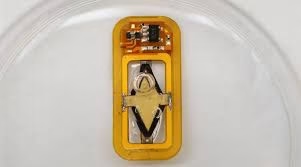A groundbreaking implant developed by MIT engineers could soon revolutionize emergency care for individuals with Type 1 diabetes. The device, which sits just beneath the skin, contains a reservoir of glucagon — a hormone used to treat severe hypoglycemia — and can be activated automatically when blood sugar drops to dangerous levels.
For people with Type 1 diabetes, hypoglycemia is a persistent threat that typically requires a rapid injection of glucagon to counteract low blood sugar. However, in many cases — particularly during sleep or in young children — recognizing and responding to these episodes in time can be difficult or impossible.
To solve this problem, MIT researchers designed a small, implantable device that can detect dangerously low glucose levels and respond immediately by releasing glucagon into the bloodstream, eliminating the need for manual injections.
“This is a small, emergency-event device that can be placed under the skin, where it is ready to act if the patient’s blood sugar drops too low,” said Professor Daniel Anderson of MIT’s Department of Chemical Engineering. “Our goal was to build a device that is always ready to protect patients from low blood sugar. We think this can also help relieve the fear of hypoglycemia that many patients, and their parents, suffer from.”
The device could be a game-changer, especially for nighttime episodes or for children who may not be able to recognize symptoms or self-administer glucagon. With further development and testing, it may offer new peace of mind to millions managing the daily risks of diabetes.



